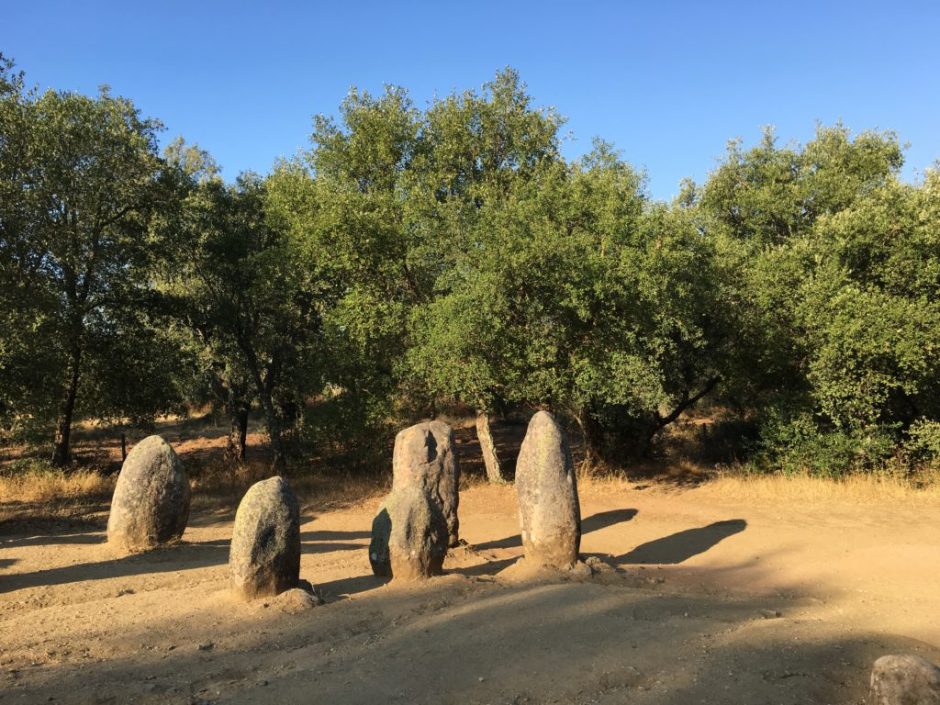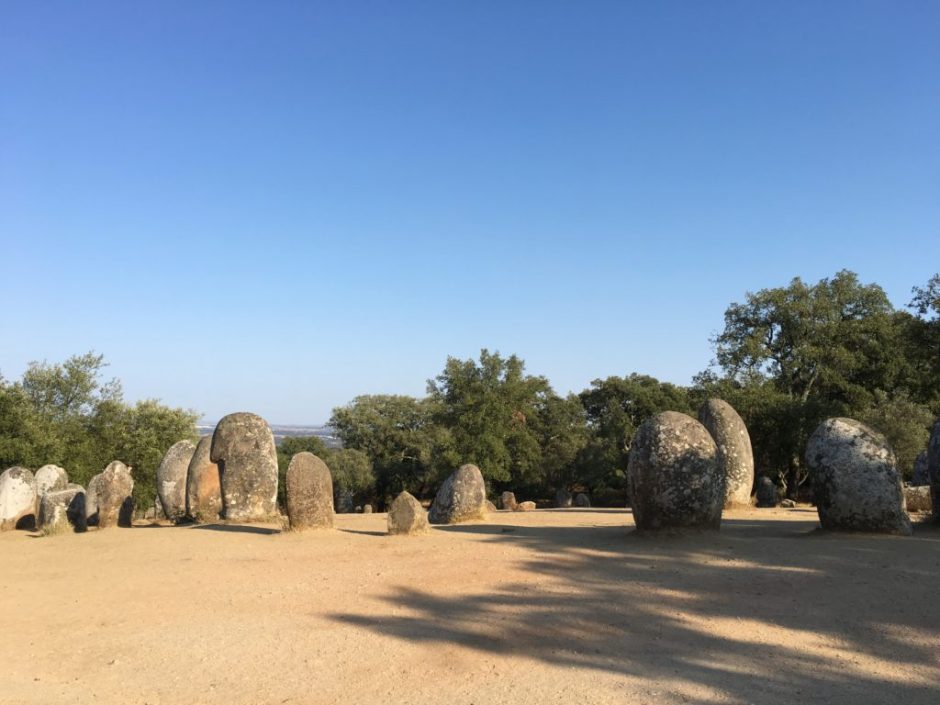There’s plenty of summer left, so if you like spending your sunny days outdoors, head to Bend, Oregon. Hiking, biking, fishing, rock climbing, floating, kayaking, and paddle boarding are just a few of the outdoor pursuits that make Bend (and nearby Central Oregon communities) enormously popular in summer months. Waterfalls, lakes, and lava flows are close by and the mighty Deschutes River winds its way right through the city.

I noticed a sign saying, “Defund Visit Bend,” posted on a bridge on a recent stay, but I’ve always found the locals friendly and happy to share the attractions their city offers. As a frequent visitor, here are some of my favorite places to go out and play:
Floating Away
I think floating on the Deschutes River is one of the best ways to while away a summer afternoon in Bend, and I’m not alone in that opinion. Between Memorial Day and Labor Day, one quarter of a million people take to the river on floats, paddle boards and kayaks, according to VisitBend.com. Weekends get really crowded. If you can, do your floating mid-week. There are rules for everyone’s safety. Wear your personal flotation device (there are no lifeguards on the river), and alcoholic beverages are not permitted. It’s the law.
We’ve seen plenty of dogs floating with their humans, but it is not recommended, even with doggie life jackets. Neither are pool toys and floats; they aren’t sturdy enough for the rocks and branches you’ll encounter. If you don’t have your own, rent equipment at Park & Float or Riverbend Park. PFDs are free to borrow at both places. Reserve your floats in advance since it’s first come, first served, at the rental places.


Along with your water bottle, sunscreen, hat, and rash guard, remember your aqua socks. Get a pair with sturdy soles to protect your feet from rocks. Leave your flip flops at home. You’ll also want a dry bag to keep your car keys, wallet and phone safe while you float along. If you didn’t bring one, there’s an REI in the Old Mill District.
Keep an eye out for the white water rapids under the Colorado Avenue Bridge. Fear not, it’s a short segment of the river. If you’re not up for the adrenaline rush, it’s easy to leave the river just before the rapids and put back in after you pass them. There are warning signs in the river that show where to go. It’s fun to watch people navigate the rapids on their floats, paddle boards, kayaks, and sometimes, surf boards, from the safety of the shore. Depending on where you put in (and the currents) your river “cruise” will take between one and two hours.
The Old Mill District: Go for the Music, Bird Watching, and More
You’ll have floated (or paddled) right by the Old Mill District on your river outing. The towering smokestacks you passed have become a Bend landmark, and are all that remain of what were once two highly productive lumber mills. Now the Old Mill District is a thriving gathering place with restaurants, bars, shops and Hayden Homes, the largest outdoor music venue in Oregon. The amphitheater has 8,000 seats, including lawn spots, and features chart toppers in every genre from alt rock to cowboy crooners all summer long. It’s the perfect place to enjoy a sultry summer night!
The inviting pathways along both sides of the Deschutes at the Old Mill make it easy to walk, jog, or bike along the river. If you don’t have your own two wheels, Wheel Fun bike rentals are open seasonally. Bend is a dog-friendly town so bring your furry friend for a stroll here, but please obey leash laws.
This is also a great place for bird watching. Pick up a free guide at the Ticket Mill or the Bend Visitor Center before you set out. Raptors, woodpeckers, songbirds, waterfowl and shorebirds as well as owls and quails call Bend and its environs home or are migratory visitors. The East Cascades Bird Alliance occasionally offers free guided “bird walks” along the river.
If you’re looking for retail therapy, the Old Mill has everything from clothing to fine jewelry, accessories and sporting goods. There are also plenty of places to eat and drink. But let’s get back to the great outdoors.
Climb Smith Rock

Some claim rock climbing was invented at Smith Rock State Park in nearby Terrebonne. Whether that’s true or not, with a ridge elevation of 3,200 feet, the high volcanic walls are a big draw for climbers from around the world. That’s not for me, but the scenic hiking trails are. Choose the well-marked trails that best match your abilities from the easy Canyon Trail to the aptly named Misery Ridge Trail. You’ll enjoy spectacular vistas on whichever trail you follow, especially the ones overlooking Crooked River. Smith Rock is also popular for fishing and mountain biking. It’s a beautiful place to spend the day.
There is little to no shade at Smith Rock State Park, and it gets really hot in Central Oregon in the summertime. Try to get out on the trail early and bring plenty of water. Rangers recommend 16 oz. per person per hour. Wear sunscreen and appropriate footwear and be mindful that this is a wilderness area. Watch out for wildlife and snakes.



There is a $10 day use fee for Oregon residents ($12.50 for all others), unless you have an annual Oregon State Park pass. Smithrock.com has all the details you’ll need to plan your outing. Check in at the Welcome Center in the parking lot for passes, maps and information.



There are no services in the park, but plan to stop at nearby Juniper Junction. Rockhard has the most delicious huckleberry ice cream I’ve ever tasted. Reward yourself after your exertions! The small store also has local crafts, souvenirs, and snacks. Contact them for rock climbing guides.
Alpacas!



On your way back to Bend, stop at the Crescent Moon Alpaca Ranch. Walk around the enclosure, learn about, and feed these fuzzy creatures whose wool is so prized. These alpacas are super friendly and so are the people who work here. We saw new babies in the barn and you might, too. Crescent Moon has a terrific gift shop with all things alpaca from gorgeous knitwear to stuffed toys and lotions and potions made locally. They sell the alpaca food there, too.
A Special Place: Newberry National Volcanic Monument
Volcanic activity began here 500,000 years ago and produced 400 cinder cones, lava tubes, and vents amid a flow area that covers 1,200 square miles. Newberry National Volcanic Monument in the Deschutes National Forest covers 57,384 acres of that area, which means there are plenty of places to explore the fascinating geological formations created by volcanoes in Central Oregon.

Some sites in the Newberry National Volcanic Monument are accessible to all, others are not for the mobility challenged. Big Obsidian Flow is in the latter category. Formed only 1,300 years ago, it is the youngest lava flow here.

Somehow we thought it would be fun to climb what turned out to be an extremely treacherous one- mile loop to the top of the razor-sharp flow. It was all about the views of surrounding mountains and Paulina Lake for us. While we were enjoying the sights from the top, suddenly lightning flashed, thunder roared, and the rain poured down. Realizing we were the tallest things up there, we ran for our lives as carefully as we could down the hazardous, barely- there trail, getting soaked to the skin. It was an adventure we laugh about now.



We’d gone from sunshine to torrential rains and back to sunshine by the time we reached nearby Paulina Lake. We knew we’d find restrooms, shelter and food there. A kind woman on the restroom line took one look at my soaking wet hair and clothes and offered me her beach towel. I gladly accepted. Paulina Lake is popular for boating and fishing and has a lodge with a casual restaurant. They rent boats ranging from canoes to motorboats, but I’d had enough water for one day.
Welcome to Lava Lands!
Lava Lands Visitor Center with its Chitwood Exhibit Hall is a great place to begin your exploration of the Newbury National Volcanic Monument. Named for a former geologist with the U.S. Forest Service, the Chitwood Exhibit Hall is full of educational, interactive exhibits on the geology and cultural history of the area including a 3D topographical map. There are daily films and helpful Forest Service Ranger talks.


Step outside the visitors center and you’ll enter Lava Land. There’s a 5.5-mile fully accessible Sun Lava Trail as well as the Trail of Molten Land over the 7,000-year-old lava that flowed down from nearby Lava Butte. There are plenty of informative signs about the geological features, the wildlife, and the original inhabitants on these lands. A seasonal shuttle takes visitors to Lava Butte for a fee, or you can hike up. There’s also a pleasant walk through a young forest along the Trail of the Whispering Pines.
Had we come here first, we would have been better prepared for Big Obsidian Flow! There are picnic tables and restrooms here as well as a well-stocked gift shop.
Spooky and Surreal Lava Cast Forest
Once upon a time, an enormous forest stood where lava casts of this old growth forest now lie. About 7,000 years ago molten lava caught the trees on fire, and the resulting steam formed the casts. It’s an extraordinary place and fascinating to see.



The beginning of the trail from the parking lot is paved and accessible to all, but further out into the Lava Cast Forest the trail becomes rough and nearly disappears in places. Strollers or wheelchairs should turn back, but hikers can continue down the switchback through the Ponderosa Pines. There are no services and no shade here so be prepared for heat and sun, and pack accordingly.
Waterfalls Galore
The Northwest Waterfalls Survey lists more than 60 waterfalls in Deschutes County, some unnamed. At almost 100 feet, Tumalo Falls is the tallest and one of the most popular waterfalls in Central Oregon. It’s easy to reach and busy with bikers and hikers. For fewer crowds, head halfway between Bend and Sunriver to see both Dillon and Benham Falls. We visited both one afternoon.

These are very different from the typical cascading waterfalls you might expect, but well worth a visit. Reach these falls by either hiking the Deschutes River Trail between the two or driving to each. We drove and hiked the trails along the river at each of the falls.
The one-mile accessible trail from the day use/parking area at Dillon Falls takes you through the towering Ponderosa pines to a lookout point over the river. The river narrows here, and you can view the raging rapids furiously funneling through the channel as it drops, creating Dillon Falls. The lava flow on the opposite shore is impressive, too.


Beware! The river here runs tremendously fast and turns into Class-V whitewater. It is as treacherous as it is beautiful and a recent tubing accident resulted in fatalities. If you are not an expert on the water, the views are best enjoyed from the trail. Hike along the riverbank to enjoy the spectacular scenery.

South of Dillon, you’ll find Benham Falls. At 25 feet, Benham is the largest waterfall on the Upper Deschutes River. There’s no monumental cascade of water, instead you’ll see a series of powerful rapids rushing over steep volcanic rock. The drop forms Benham Falls. You may see rafters and kayakers paddling through the fast-moving river here, surrounded by high volcanic walls. We also spotted hardy mountain bikers on the rugged trail as we relaxed with our picnic lunch.



Just beyond the Newbury Caldera, 80 feet high Paulina Falls is another favorite. There’s a short, accessible trail to the double-plumed waterfall and a picnic area. Hike further along to view the majestic falls from above, which we did. You won’t be alone here; these falls are popular.

You’ll need a $5 day use pass, Northwest Forest annual pass, or a lifetime America the Beautiful pass available to people age 62+ for $80 wherever you see signs saying, “Recreation fee required.” Click here for pass and permit information.
But Wait, There’s More!
Bend has plenty to offer in all seasons, and it’s especially enjoyable in summertime. Visitors can explore the Ale Trail, High Desert Food Trail, and Roundabout Art Route. Downtown Bend is a delight with boutiques, restaurants, breweries, and bars. There are world-class golf resorts, and even a tea producer in this growing city.
Woman-owned Metolius blends responsibly- sourced teas from family farms and small co-ops, along with delicious handcrafted syrups. You can sample their popular chai, Earl Gray and other teas at local cafes including Sisters Coffee and the Backporch. They’ll ship your online order or you can pick it up when you’re in Bend. I love their teas and was lucky enough to have a private tour there.


There are also notable museums in and around Bend, including the High Desert Museum, my favorite! More on that in another article.
Whether you’re traveling solo, as a couple, or taking the whole family; go and enjoy this outdoor paradise while the summer days are long.
Written and photographed by Jeanne Neylon Decker
Protected by US copyright laws.
This post contains affiliate links. If you click and book, I may earn a small commission at no cost to you. I promise not to spend it all on ice cream. Thank you!




























































































































































































































































































